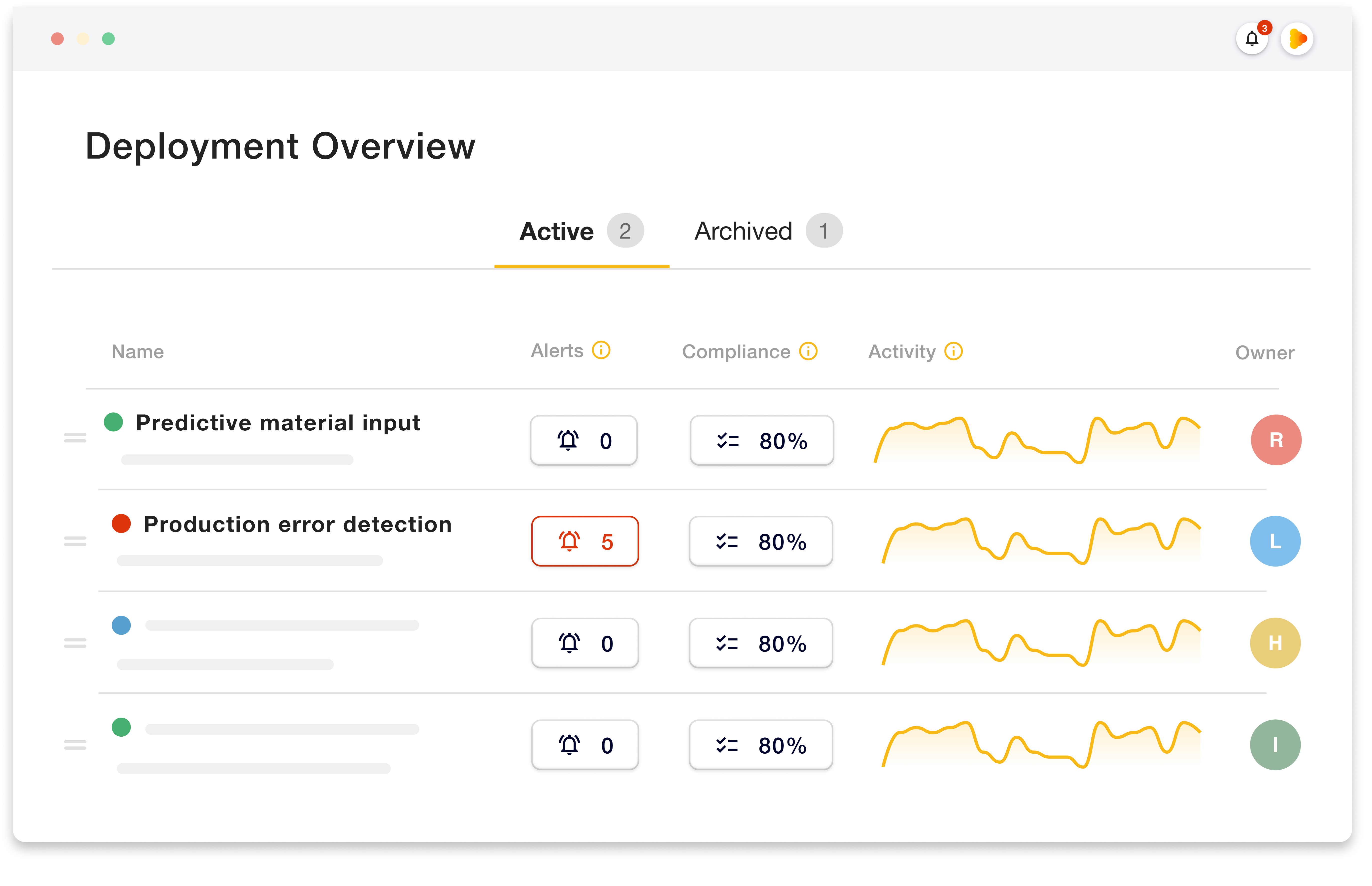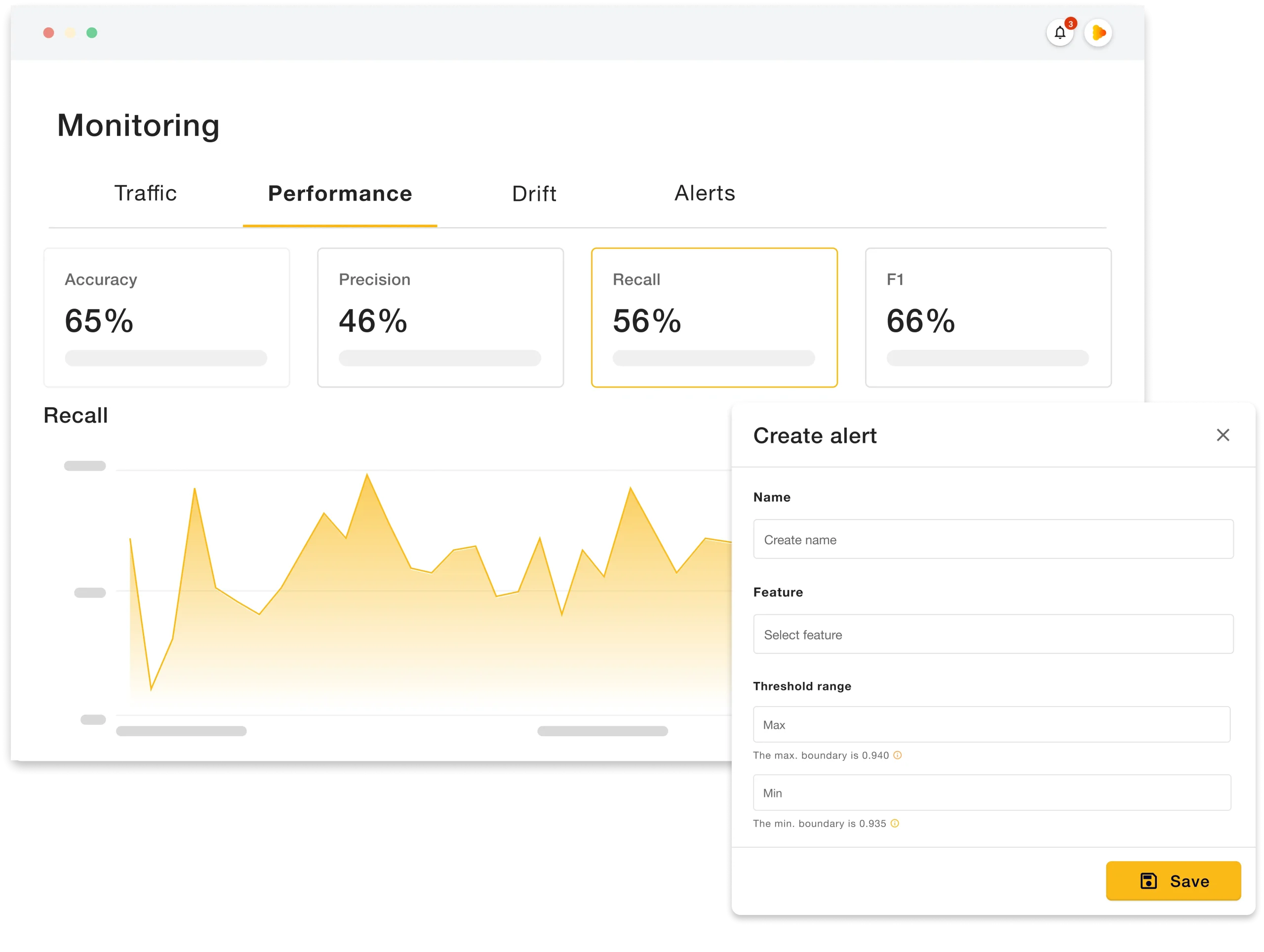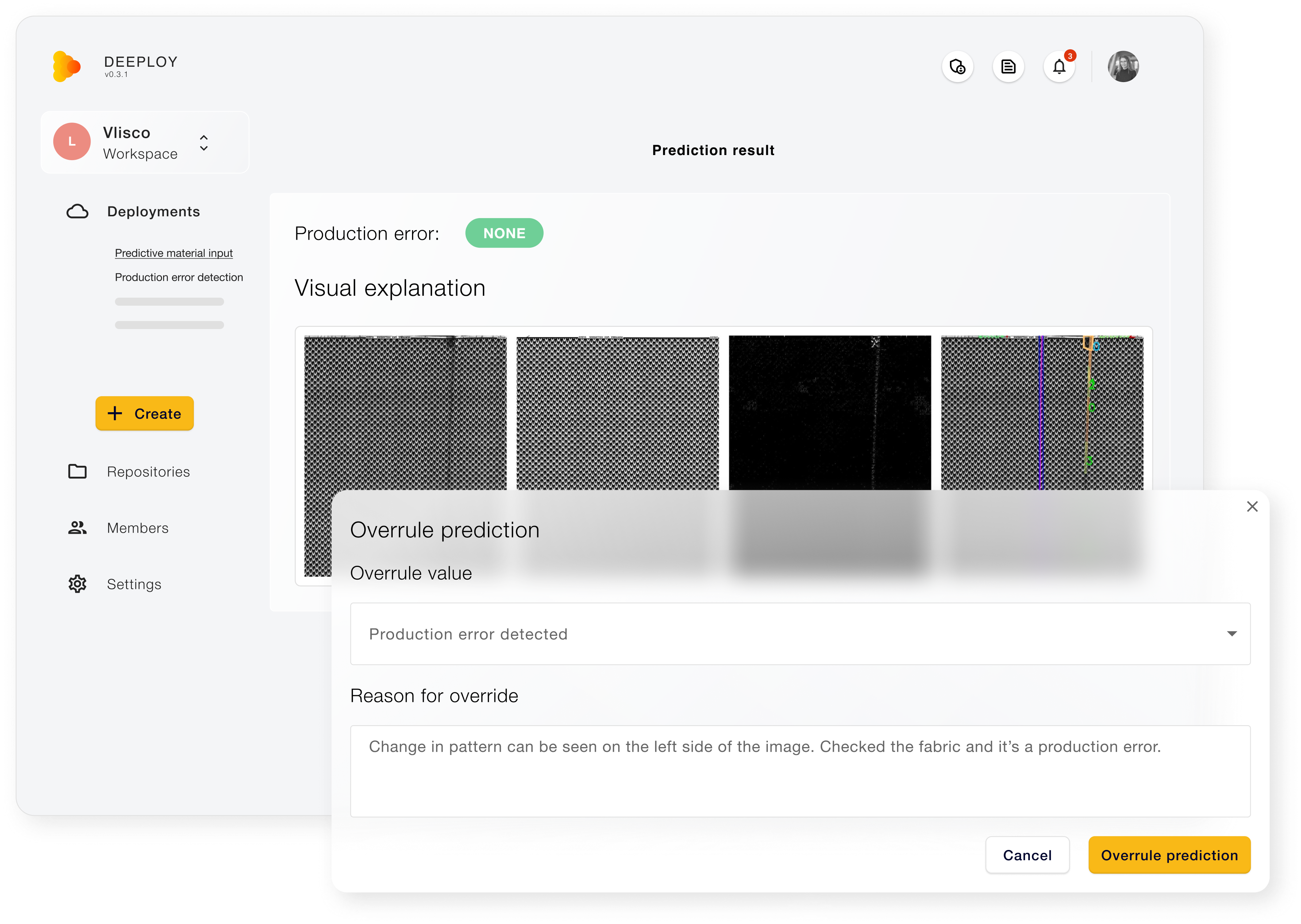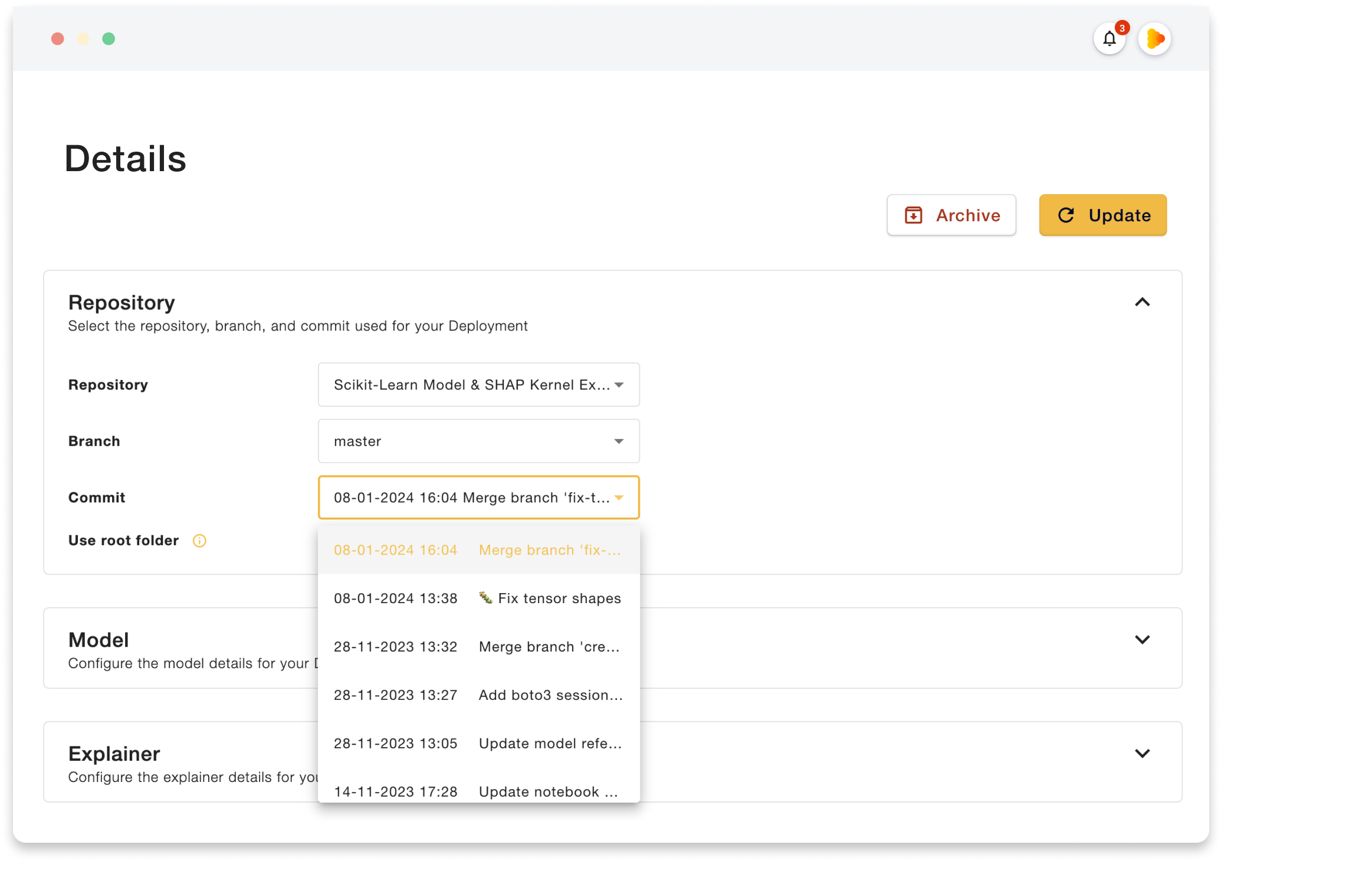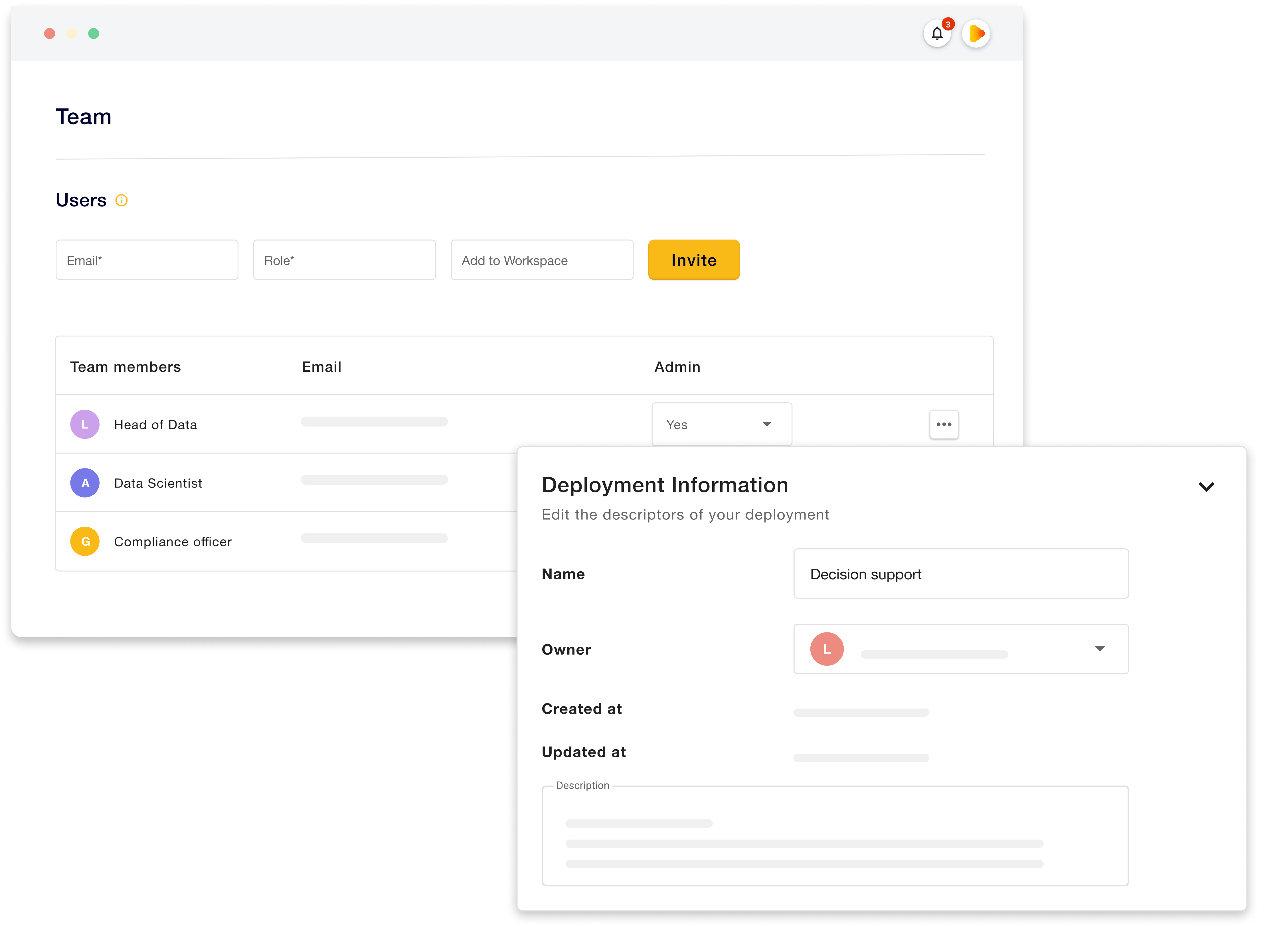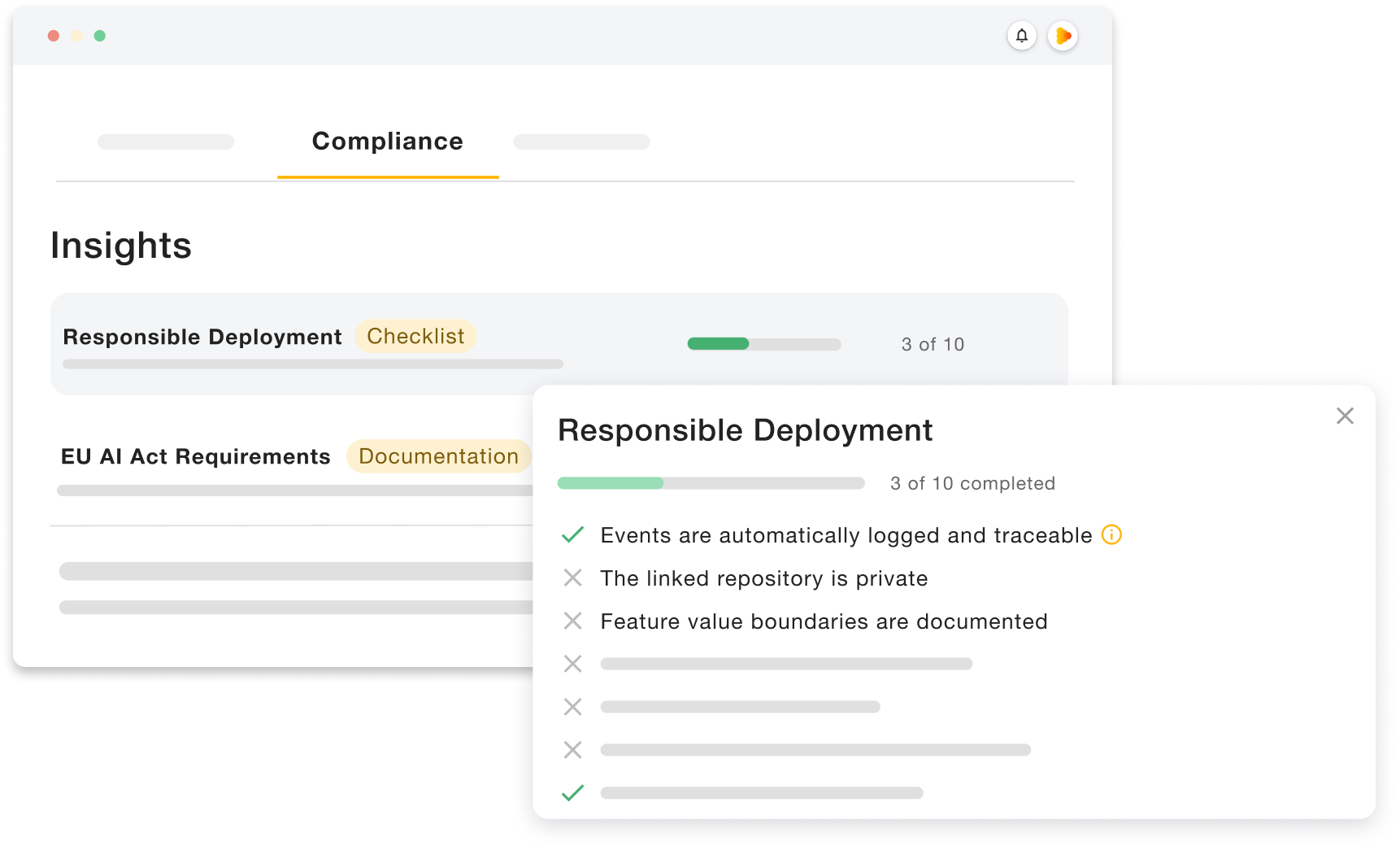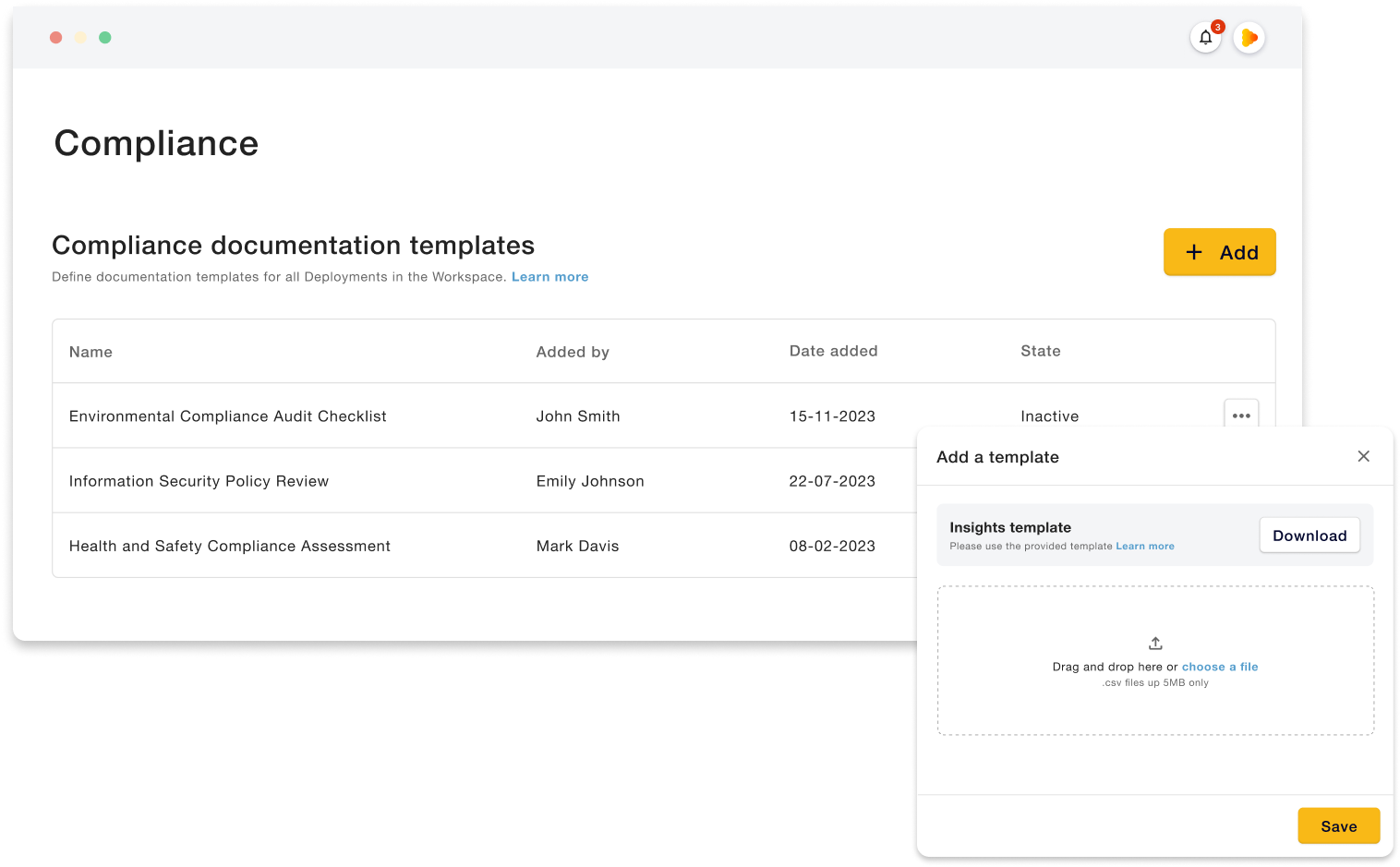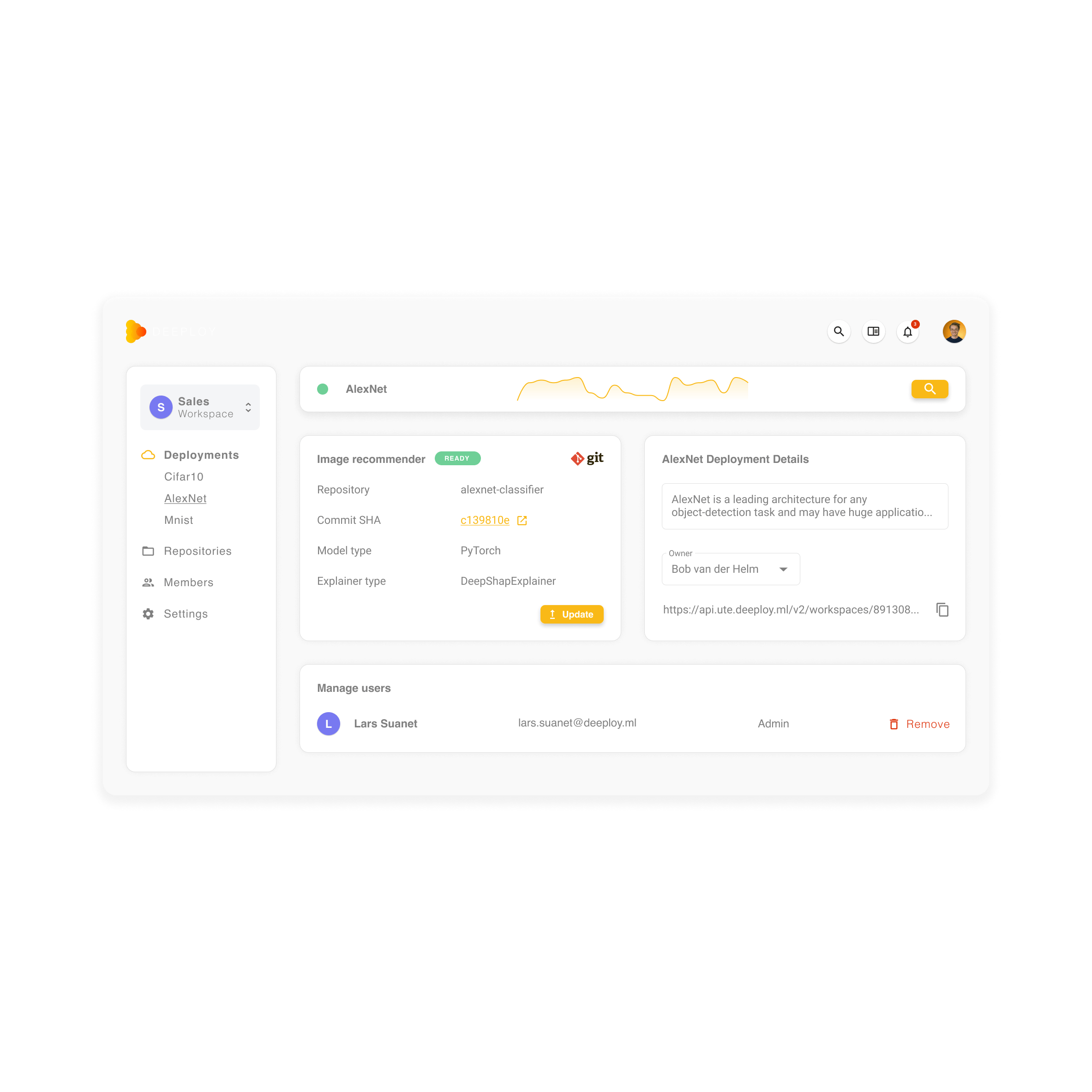Explainable AI for better Image Recognition
While anomaly detection has been a manual process in the past, AI opens up new opportunities. With the support of image recognition models, a large number of outputs can be analyzed quickly, increasing the efficiency of processes. However, success is dependent on organizations maintaining high model accuracy and performance standards.
Learn more about how Vlisco, a Dutch manufacturer of luxury fabrics, uses Deeploy to control and optimize the quality of their machine-learning models, making textile production processes more efficient and reducing costs in manufacturing.
Organizations using Deeploy












Prevent model degradation
AI models for image recognition heavily rely on the availability of production data as well as product & production order characteristics to correctly function. Moreover, there are also challenges of potential degradation of performance due to changing factory environments and designs. Thus, to deliver the expected high-quality control, models must continuously be evaluated for performance and kept to high standards of accuracy.
Oversee model performance
From the same platform, teams can monitor models’ vital performance metrics, check on model health, and review and update all deployment information.
Moreover, Deeploy provides the option to set customized, real-time alerts, swiftly informing data science teams about performance drifts and allowing them to take quick corrective measures. This is especially important when it comes to ensuring the highest accuracy possible for anomaly detection models.
Use explainability & expert feedback to fine-tune model accuracy
Models used for image recognition often lack interpretability and explainability, making it difficult to understand their decision-making process when needed. This means that verifying and improving model performance and accuracy becomes a harder task.
Deeploy allows data teams to deploy models with both standard and custom explainers and easily connects to any API where model predictions and explanations can be translated into a user-friendly UI.
For end-users who interact with image recognition systems, explainability enhances understanding and acceptance of AI-driven decisions. Moreover, when explainability is provided, organizations can also opt to implement a human feedback loop. This feedback loop allows experts to directly evaluate and, if necessary, overrule predictions.
Allowing for feedback from end experts increases confidence in AI systems and helps maintain and improve model accuracy. This feedback can then be fed back into Deeploy where it is translated into the disagreement ratio metric. This metric can be used to evaluate the accuracy of a model and help data teams determine effectiveness and areas for improvement. Moreover, Deeploy also allows for teams to easily update and reversion models, facilitating the workflows of data teams.
Facilitate control over use cases
Besides challenges with maintaining model accuracy and performance organizations also face difficulties with the growing number of models scattered across the organization. This leads to a lack of control that not only increases the time data scientists spend managing models but also introduces governance and compliance risks.
Oversee and manage all models in one platform
Deeploy enables teams to deploy, serve, monitor, and manage AI models in one single platform, allowing for easier oversight while saving time and resources. Moreover, teams and workspaces help ensure the right oversight and access to different AI applications within the same organization. Moreover, it is also possible to assign model owners to each model, who are responsible for maintaining control over its ongoing operation.
Keep track of model requirements
Different organizations have different requirements for the correct functioning and compliance of models. Deeploy offers both standard and customizable compliance templates, enabling teams to verify that the necessary compliance requirements are fulfilled for every AI application within the organization.
While standard templates offer general guidance on high-level regulation, custom compliance documentation allows teams to upload checklists tailored to fit specific requirements and policies of the organization.
How to get started with Deeploy
Would you like to learn more about how you can take your first steps with Deeploy? Let one of our experts walk you through the platform and how it can be leveraged for your specific concerns or start with a trial of our SaaS solution.

